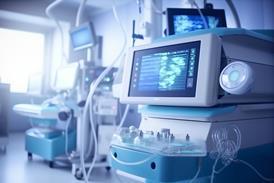
Daniela Drago
Dr. Daniela Drago is an Expert Consultant at NDA Partners. She has significant global expertise in the development of small molecules, biologics, cell & gene therapies, and combination products in multiple rare and common disease areas, including ophthalmology, neurology, and oncology. During her career, Daniela has held senior global regulatory and medical affairs positions at Biogen, F. Hoffman-La Roche, Vifor Pharma, Aurion Biotech, and Bausch & Lomb. She was formerly an Associate Professor at George Washington University’s School of Medicine. Currently, she serves on the Regulatory Affairs Certification's Board of Directors, the Executive Committee of the American Course on Drug Development and Regulatory Science (ACDRS), and the Regulatory Affairs Committee of the American Society of Gene and Cell Therapy (ASGCT). She is a TOPRA fellow (FTOPRA) and a fellow of the Regulatory Affairs Professional Society (FRAPS). Daniela has received several awards, including the TOPRA Award for Regulatory Excellence and the RAPS Community Leadership Award. She received her Ph.D. in Chemistry from the Swiss Federal Institute of Technology (ETH Zurich, Switzerland).
 Journal
JournalFDA meetings: How to hold a successful meeting across the drug development lifecycle
This continuing professional development supplement discusses the available meeting options for products regulated by CDER and CBER, which should help the reader select the appropriate avenue to receive the Agency’s advice and develop a viable regulatory interactions strategy.
 CPD Supplement
CPD SupplementThe Olaratumab experience
As highlighted within this CPD article, a conditional marketing authorisation (CMA) can be revoked in Europe. However only one occurrence has occurred since 2006 (in April 2019). Lartruvo (olaratumab), a humanised antibody, was granted a CMA via accelerated assessment on 9 November 2016 for adult patients with a locally advanced, ...
 CPD Supplement
CPD SupplementQualification of stride velocity endpoint in Duchenne Muscular Dystrophy
In April 2019, the Committee for Medicinal Products for Human Use (CHMP) issued a qualification opinion on stride velocity as an endpoint in clinical studies of medicines for the treatment of Duchenne Muscular Dystrophy (DMD).[1] Mutations in the dystrophin gene cause this inherited, x-linked disorder which causes progressive muscle weakness ...
 CPD Supplement
CPD SupplementDigital health technologies – an overview of EU and US frameworks
Digital health technologies have revolutionised the global healthcare system. This continuing professional development supplement provides an overview of the qualification frameworks for digital health technologies, which are used as drug development tools in the EU and the US.
 Journal
JournalGene therapy: regional assessment comparison
Axicabtagene ciloleucel (tradename YESCARTA) is an autologous chimeric antigen receptor T-cell (CAR-T) therapy that targets CD19 and is approved for the treatment of aggressive, relapsed or refractory forms of B-cell non-Hodgkins lymphoma (NHL). The active substance is composed of a patient’s cells that have undergone ex vivo modification, which causes ...
 Journal
JournalGlobal regulatory frameworks for the development of gene therapy products
Gene therapies have the potential to revolutionise the global healthcare system. Some of these products may offer curative benefits to patients with devastating conditions. This continuing professional development (CPD) supplement provides an overview of the regulatory framework for the development of gene therapy products in key markets.
 CPD Supplement
CPD SupplementExpedited drug development regulatory pathways in the EU and the US
This continuing professional development (CPD) supplement focuses on the regulatory framework available to drug developers for expediting their products’ development and review processes in the EU and US. These mechanisms are relevant for products which address an unmet medical need in the treatment of a serious and/or life-threatening condition.
 Journal
JournalEU PIP breast implant withdrawal
The Poly Implant Prothèse (PIP) silicone breast implant failures had a socioeconomic impact at an international level, affecting nearly 400,000 patients in 55 different countries,[1] and resulted in major EU regulatory updates. PIP was a French company founded in 1991 and it produced approximately two million sets of silicone breast ...
 Journal
JournalFundamentals of the European devices regulatory framework
In the EU, the development of medical devices is supported by the European Commission Directive (93/42/EEC Medical Devices Directive). To this, the EU has a unique system in dealing with medical devices, iconised as the CE Marking, which provides the right for the products to be commercialised in the EU. This continuing professional development supplement presents the unique system of medical devices that is currently applied in the EU. Additionally, the new regulation of medical devices (EU 2017/745 Medical Device Regulation) is also covered.
 Journal
JournalEluvia: a drug-eluting stent
Peripheral arterial disease (PAD) affects around 8–12 million people in the US.[1] The strong association with ageing, tobacco smoking, and diabetes means that the prevalence of PAD will continue to increase in the coming years. Although 20–50% of patients with PAD are asymptomatic, they are still at significant risk of ...
 Journal
JournalFDA regulatory pathways for medical devices
The regulations, developed as a result of the 1976 Medical Device Amendments to the Food, Drug, and Cosmetic Act of 1938, share a common goal with the pharmaceutical regulations: they both strive to ensure that new medical treatments reach the public as quickly as possible while protecting patients and ensuring that the new treatments have a positive benefit–risk balance. However, they approach this goal in different ways. This continuing professional development supplement explains the fundamentals of the FDA regulatory pathways for medical device manufacturers that wish to bring their products to the US market.



















